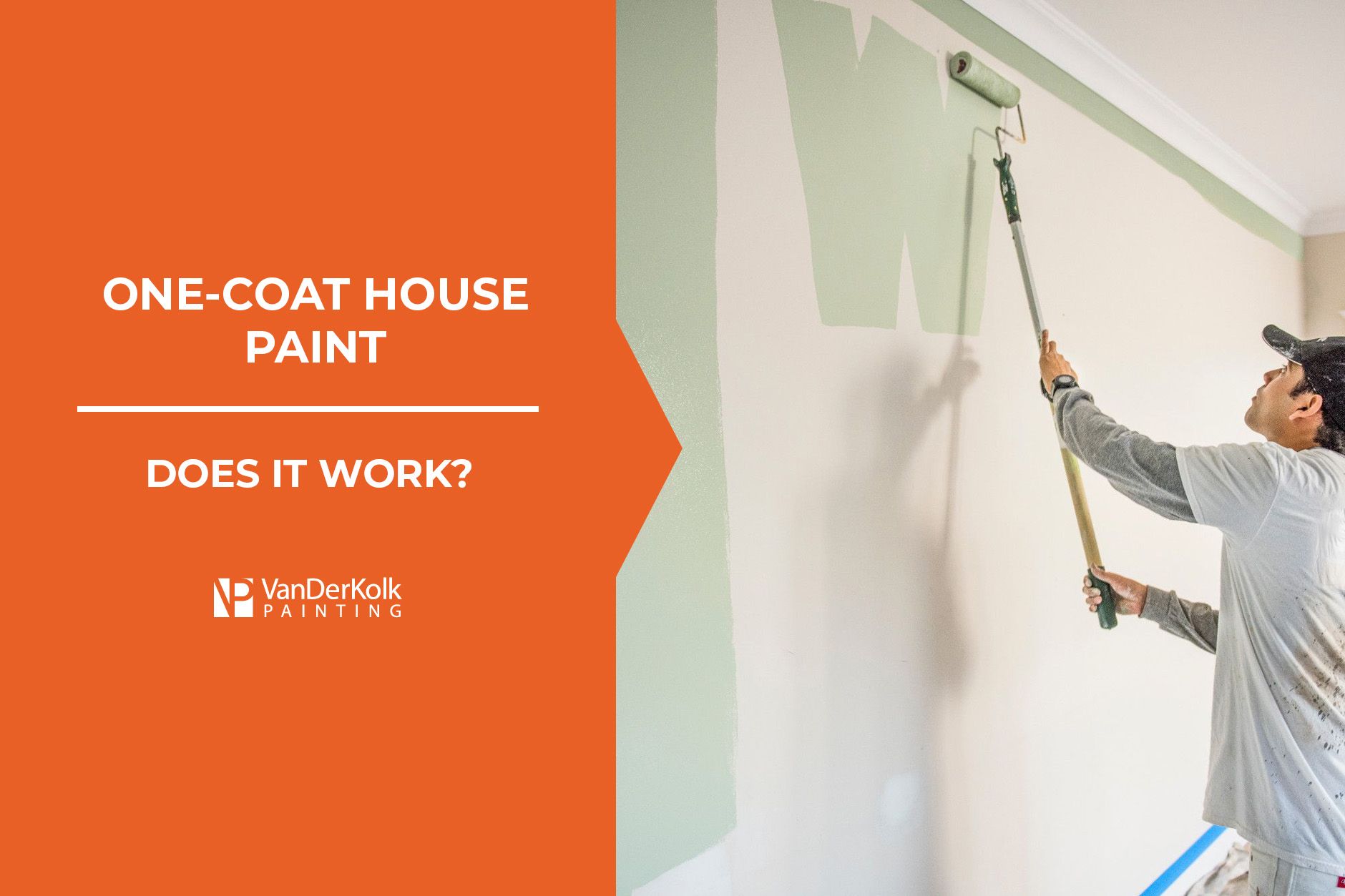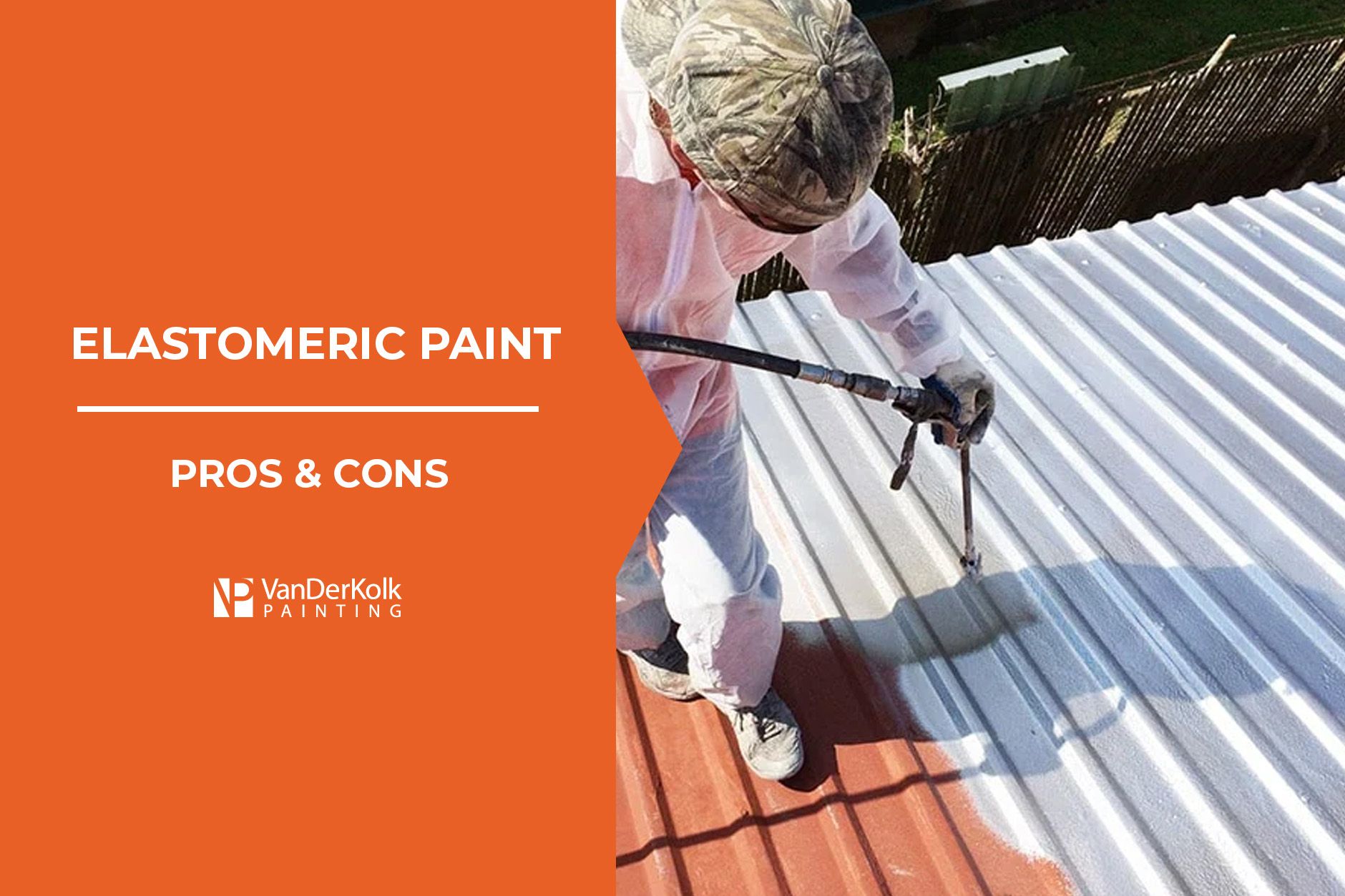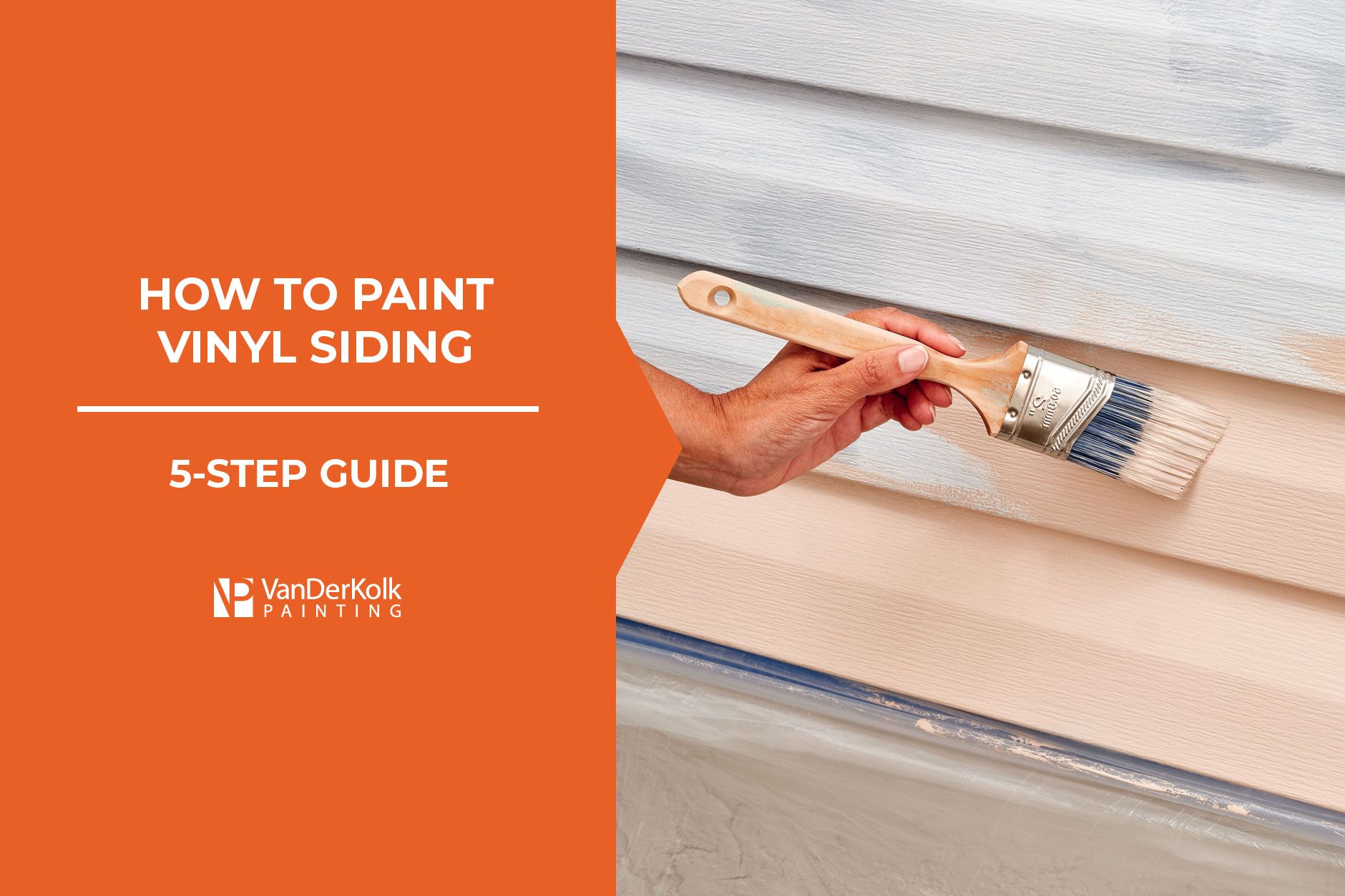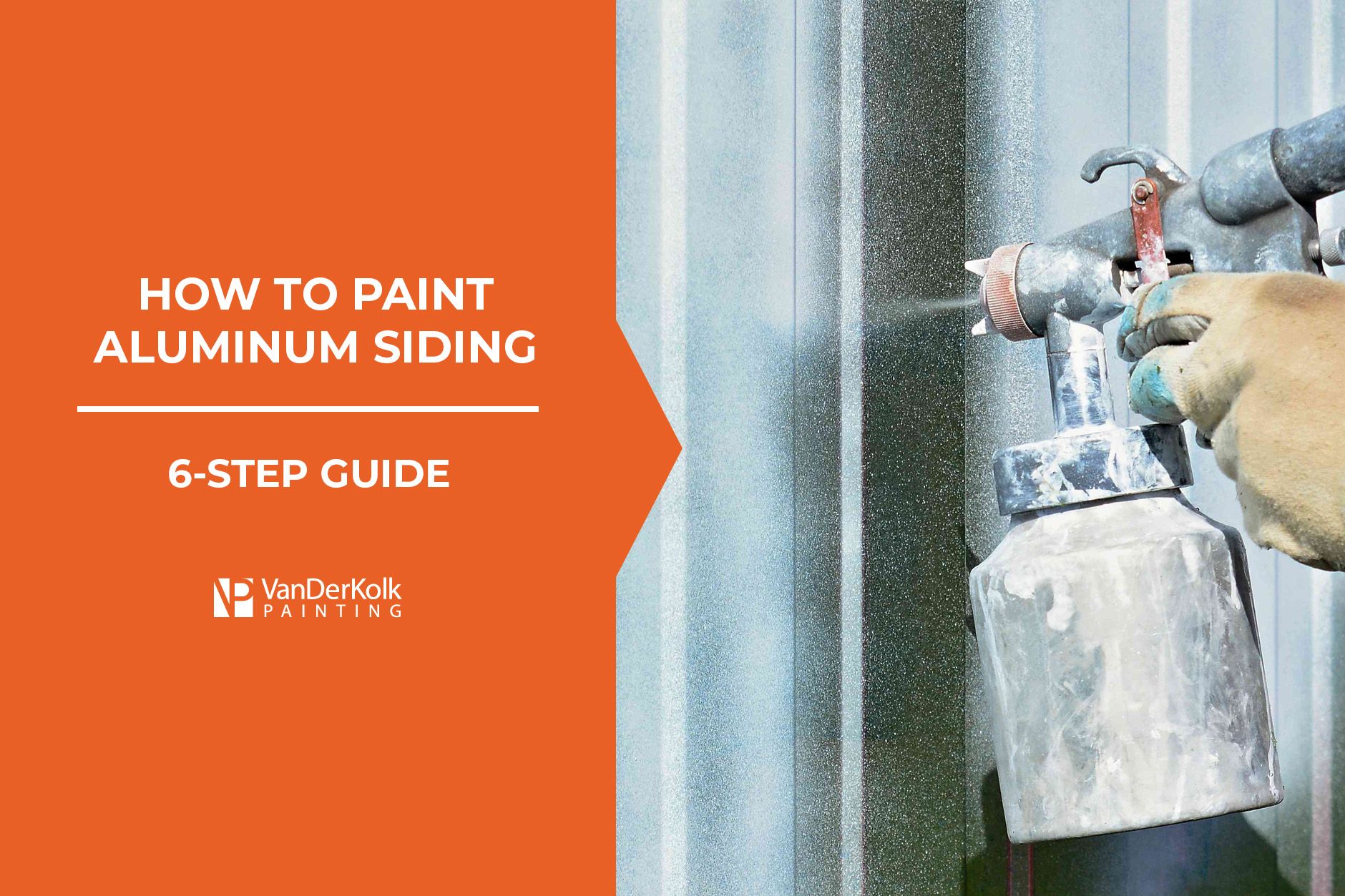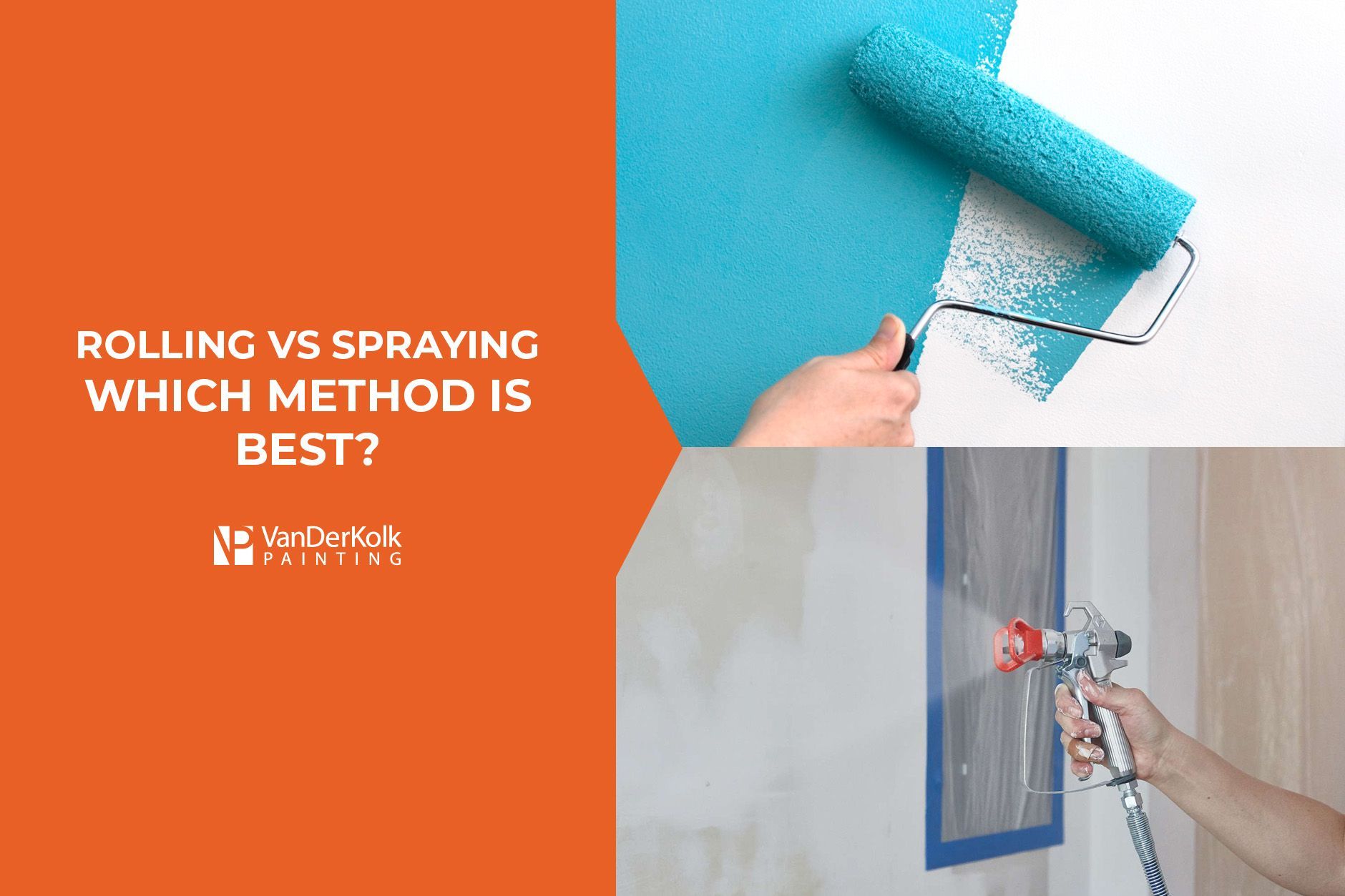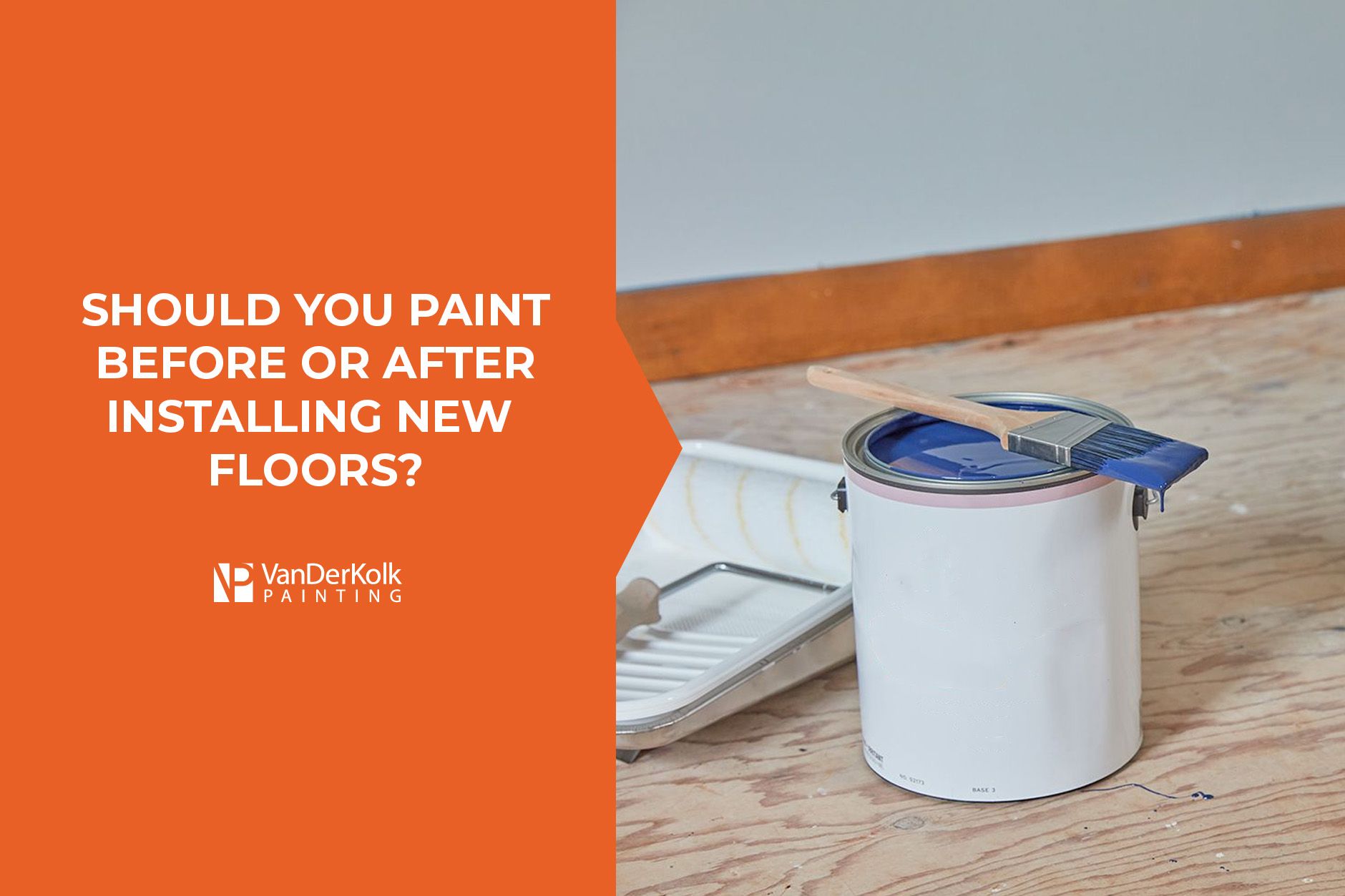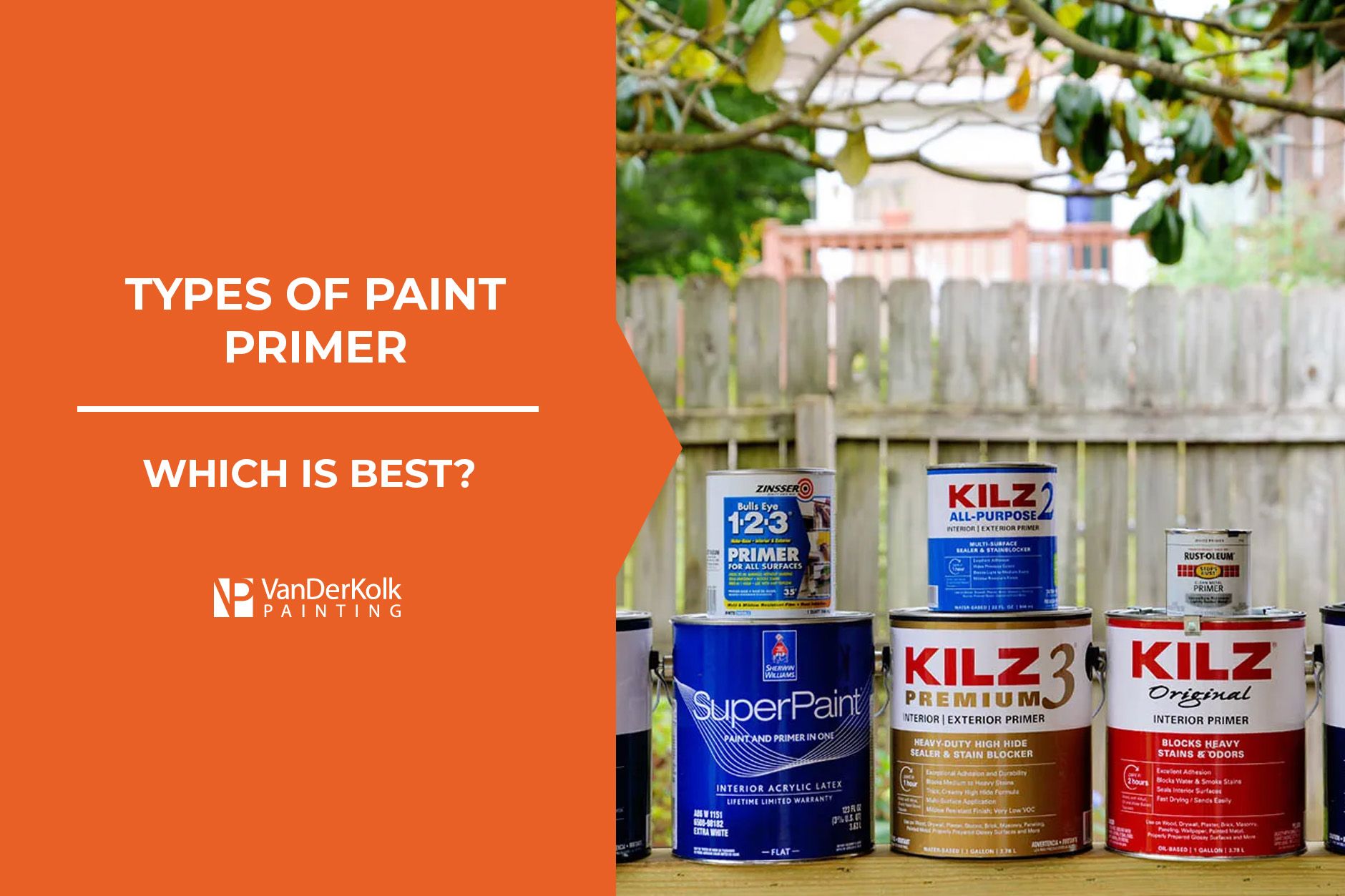Paint vs. Stain: Which Should You Use?
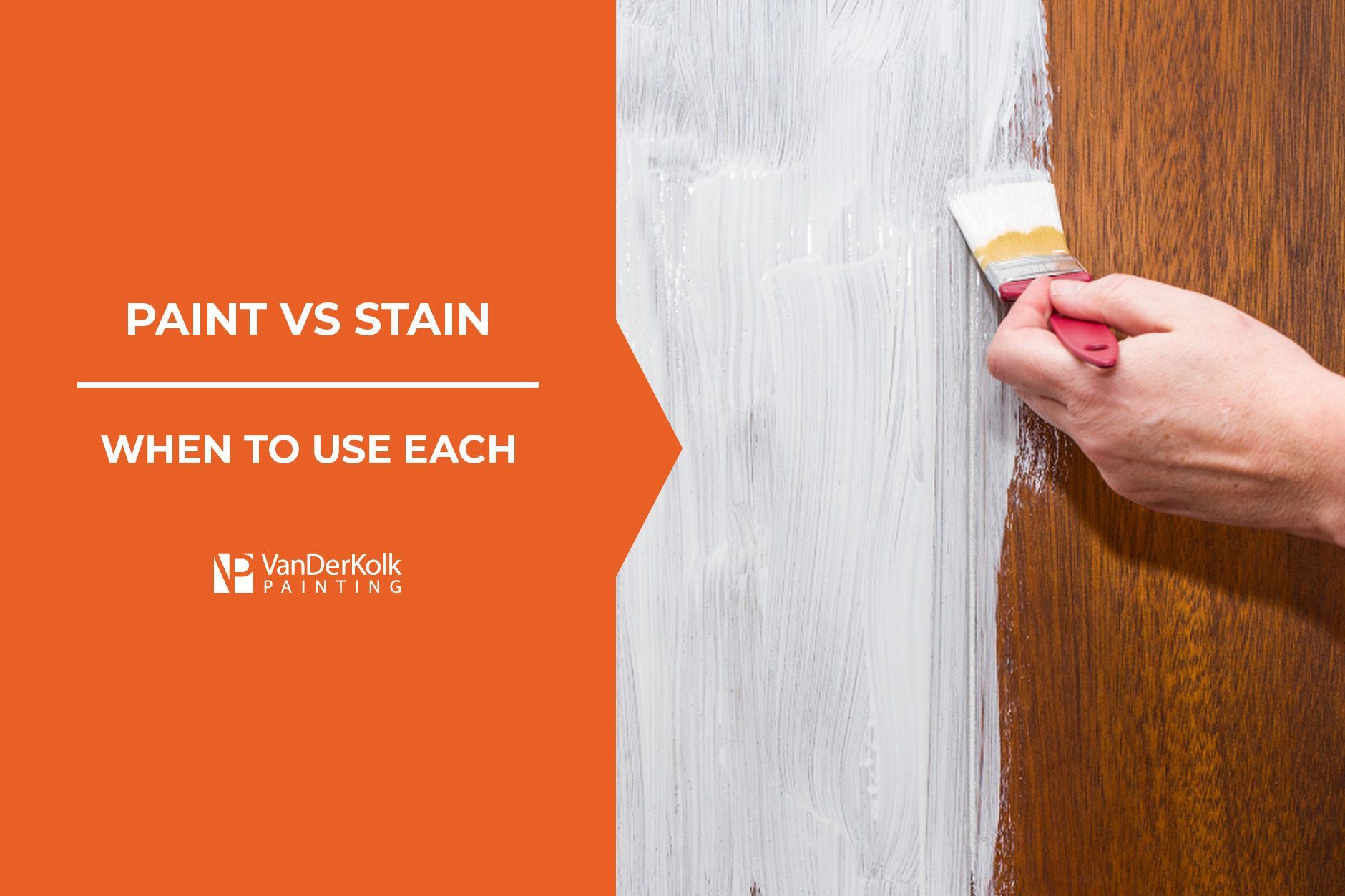
As you stand in front of your kitchen cabinets or wooden fence, you’re faced with the age-old question, “Should I paint or stain wood?”
It’s a conundrum that many homeowners face when it comes to refreshing a wooden item, either in their house or on their property. And the answer isn’t as simple (or maybe it is) as you might think: you can use either!
But here’s where it gets a bit complicated. Paint and stain each have their pros and cons that they bring to the table. That means deciding which to use requires a bit of research or a discussion with a painting professional at
VanDerKolk Painters.
We’ve got you covered. By the end of this blog post, you’ll know all about paint vs. stain when it comes to wood, so you can make a more informed decision for your next project.
Paint vs. Stain: What’s the Difference?
Your first instinct might be to wave your hand and think that paint and stain are essentially the same. That’s where you’re wrong.
Paint is formulated to sit on top of the wood and create a solid, opaque layer. It hides the grain completely and generally provides stronger protection from moisture and UV rays. However, paint is more likely to chip or peel over time if it is not applied correctly.
Stain, on the other hand, soaks into the wood and enhances the natural grain rather than covering it for a more natural look. It comes in various opacities, including clear, semi-transparent, and solid. Stain also requires less prep work than paint and is less likely to peel and crack. It can offer some protection to the wood against UV rays and moisture.
The main difference? Paint allows you to choose bold colors to fully cover the wood, while stain highlights and enhances the wood’s natural appearance.
Paint for Wood Projects
Paint is a great choice for wood projects that you want to fully transform using an opaque color while also adding a protective barrier.
Advantages of Using Paint on Wood
There are many advantages to using paint on wood projects.
- Wide Color Variety: You can choose from thousands of paint colors to use on your wood project, ensuring it matches your home’s interior or exterior aesthetic.
- UV Protection: Modern paint formulas contain UV inhibitors to prevent the paint from fading, while also protecting the wood beneath it.
- High Durability: Paint completely seals the wood, creating a thick, solid layer that blocks out moisture, mildew, and dirt while preventing issues like fading and discoloration, rot and mold, and cracking or warping from the weather.
- Conceals Flaws: Paint can cover knots, stains, and grain patterns in wood, which also helps protect against damage from wear and tear, especially in high-traffic or high-touch areas.
Disadvantages of Using Paint on Wood
As with everything, there are some disadvantages to consider when using paint on wood surfaces.
- Peeling Over Time: While paint is durable, it can peel over time due to poor surface preparation, the combination of incompatible paint and primer, moisture, and natural aging and wear.
- Hides Natural Grain: If you want to maintain the natural look of wood and see the natural grain pattern, paint will cover it up completely, providing a solid colored surface.
- Requires More Preparation: Painting wood requires you to put in more prep work, such as cleaning and repairing the surface, sanding, priming, and adding multiple coats of paint.
Related:
How Many Coats of Paint Do I Need? A Simple Guide for Surfaces and Paint Types
Types of Paint to Use on Wood
Choosing the right type of paint for your wood project can ensure longevity, durability, and a professional-looking finish.
Acrylic Paint
Acrylic paint is a versatile, water-based option ideal for both indoor and outdoor wood surfaces. It offers strong adhesion, especially with proper priming, minimizing the risk of peeling or flaking. Its flexibility allows it to expand and contract with the wood, protecting against cracking due to temperature and humidity changes.
Acrylic also resists UV rays and moisture, helping preserve both color and wood integrity. With
low VOC content, it’s a safe and eco-friendly choice for interior projects.
Related:
Acrylic vs. Latex Paint: Which Should You Choose?
Oil-Based Paint
Oil-based paint is highly durable, making it ideal for exterior wood and high-traffic areas. It adheres well and creates a hard, smooth finish that resists wear. Compared to acrylic, it offers superior water resistance, making it a great choice for moisture-prone spaces, like bathrooms or trim work.
However, it has a long drying time (8 to 24 hours per coat) and high VOC levels, so it’s best used outdoors or in well-ventilated areas.
Alkyd Paint
Alkyd paint combines the strengths of acrylic and oil-based paints, offering a smooth, durable finish ideal for wood in high-traffic areas. It resists scratches, scuffs, and moisture, with strong adhesion to wood surfaces. While it has higher VOCs than acrylic (but lower than oil-based), proper ventilation is still necessary. Expect a longer drying time, typically 8 hours or more between coats.
Stain for Wood Projects
If you’re looking for a quick weekend project that will enhance your wood surface, then stain is the way to go.
Advantages of Using Stain on Wood
There are many advantages of using stain on your wood surface.
- Enhances Natural Grain: If you want to maintain the natural wood look but would like to enhance the richness of the color, then stain is the answer.
- Easy to Apply: Stain requires less surface prep, no primer (usually), and typically requires fewer coats. It also has a faster drying time than paint.
- Protects Wood: Stain offers protection without hiding the natural beauty of the wood by keeping out UV rays, moisture, and mildew, especially when sealed with a topcoat.
Disadvantages of Stain on Wood
While stain is easy to use on wood surfaces, it does come with a few drawbacks to consider.
- Limited Color Range: Stains are available in natural wood tones and muted shades, which may be a drawback if you prefer vibrant or modern color schemes for your wood project.
- Doesn’t Hide Flaws: Since stain soaks into the wood and enhances the grain, it will highlight flaws in the wood like knots, cracks, and patchy grainy patterns.
- Difficult to Change Later: Once you stain wood, it’s difficult to go back and paint or re-stain it in a different color, especially if the stain was dark or oil-based.
- Requires Frequent Maintenance: Lighter or transparent formulas may wear off faster than paint and require application every 2 to 3 years.
Types of Stains to Use on Wood
Choosing the type of stain to use on your wood project can significantly impact its performance over time.
Water-Based Stain
Water-based stains are easy to apply, dry quickly (in 1 to 2 hours), and clean up with just soap and water. They’re ideal for indoor or outdoor use, often containing UV and mildew protection for exterior projects.
With low VOCs, they’re also eco-friendly and safe for interior applications. However, they don’t penetrate wood as deeply as oil-based stains, offering slightly less protection. They can also raise the grain in the wood, requiring light sanding after application.
Oil-Based Stain
Oil-based stain is a durable, time-tested choice for wood, especially outdoors. It penetrates deeply into the grain, offering long-lasting protection by repelling water and preventing swelling, warping, and rot. Known for rich, warm tones, it’s ideal for aging wood or restoration projects like decks, fences, and siding.
However, it has a slow-drying time (12 to 48 hours) and high VOCs, so it’s best used outdoors with proper ventilation.
Gel Stain
Gel stain is a thick, non-drip formula that offers excellent control, especially on vertical or uneven wood surfaces. It’s ideal for woods like pine, birch, or cherry that absorb stain inconsistently. It delivers a smooth, uniform finish by sitting on the surface rather than soaking into the wood. Great for beginners, it’s easy to apply and is forgiving.
However, it requires at least 24 hours to dry and must be sealed with a top coat. It also mutes the wood grain more than traditional stains.
How to Choose Between Paint and Stain
Both paint and stain are excellent choices for enhancing a wood project, but there are several factors to consider when choosing which one to use.
Aesthetic Goals
Paint and stain on wood look very different from each other. So, your desired aesthetic for your project can determine which you use.
Paint provides an opaque layer that covers the natural grain of the wood. You also have many color options, ranging from neutral to bold and vibrant.
Stain keeps the wood’s natural texture and grain, enhancing the color and richness of its appearance. This is ideal for those with a more rustic, polished, or antique aesthetic.
Durability
If you’re painting a high-traffic or high-touch item such as trim, doors, or cabinets, paint is likely more durable than stain. However, stain will not peel or crack like paint can over time or due to improper painting preparation.
Overall, paint tends to last longer and withstand more traffic and elements than stain, but both are durable in their own ways.
Maintenance
How willing are you to maintain the finish of your wood surface? Stain may require touch-ups or re-staining every 2 to 3 years, depending on the environment. However, touch-ups for stains are considered easier than touch-ups for paint.
Paint may require touch-ups every 5 years or so due to peeling or cracking. However, there are ways to prevent this from happening. Check out our blog post
Causes of Peeling Paint and How to Fix Them for more information.
Budget and Timeline
Overall, paint tends to be more expensive and involve more labor and preparation than using stain. To stain, it usually takes 1 to 2 days, while painting can take 2 to 4 days for exterior jobs.
So, if you’re looking for a cost-efficient and quick way to protect and elevate your wood, stain is the best option.
Expert Recommendations for Common Wood Projects
| Item | Paint | Stain | Either |
|---|---|---|---|
| Deck Flooring | ❌ Not ideal (slippery, chips) | ✅ Yes, better grip and natural look | ❌Only solid stain if extra coverage is needed |
| Deck Railings | ✅ Great option for bold color | ✅ Yes, natural style | ✅Depends on style and maintenance level |
| Fences | ✅If color consistency matters | ✅Yes, easy maintenance | ✅Depends on exposure and look |
| Exterior Siding | ✅Strong protection, bold color | ✅Yes, rustic appearance | ✅Depends on material and climate |
| Interior Trim/Molding | ✅Clean, polished look | ❌Rarely used | ❌Paint is usually best here |
| Cabinets | ✅For smooth, modern finish | ✅ For rustic or natural style | ✅ Depends on room style |
| Furniture (indoor) | ✅If matching decor | ✅To showcase grain | ✅Based on design preference |
| Furniture (outdoor) | ❌Paint peels outdoors | ✅Better durability outside | ❌Solid stain for high coverage |
| Pergolas/Gazebos | ❌Paint may trap moisture | ✅Stain allows wood to breathe | ❌Sealed stain withstands better |
| Wood Doors | ✅For bold entry statement | ✅For warm, natural grain | ✅Based on home style |
| Hardwood Floors | ❌Paint chips with traffic | ✅Durable and refinishable | ❌Stain is strongly preferred |
| Wood Paneling (interior) | ✅For color and coverage | ✅If you want a warm, natural look | ✅Based on style preference |
| Beams/Ceiling Accents | ❌Paint hides character | ✅Stain enhances charm | ❌Stain looks better overall |
| Porch Ceiling | ✅Great for bright accents | ✅For rustic or woodsy feel | ✅Based on design |
Professional Finishing Tip: When to Call VanDerKolk Painting
Deciding whether to use paint or stain for your wood project is just the beginning. There is a lot of hard work that goes into painting or staining wood, whether it’s a wooden fence, kitchen cabinets, or your home’s exterior. The last thing you want is to sacrifice your much-deserved weekend climbing ladders, sanding surfaces, and bending over to get into nooks and crannies.
That’s where the painting professionals at VanDerKolk Painting come in! Our painting experts will help you decide whether to use paint or stain and go over the pros and cons with you for your specific situation. After you’ve decided, we’ll put our team to work to bring your vision to life.
We guarantee customer satisfaction and won’t finish our job until you’re happy!
Contact us to get a free estimate for your next wood painting or staining project today!
Learn more about how we paint wood surfaces in our other blog posts:
- How to Paint a Wood Deck
- How to Paint Kitchen Cabinets
- Does Painting a Wood Fence Make It Last Longer?
- Can You Paint Over Varnished Wood?
Painting & Staining FAQs
Is it better to paint or stain wood?
Both paint and stain are great options for wood projects, but it will depend on the aesthetic you’re going for and the level of durability you need.
Which lasts longer on wood—paint or stain?
Paint tends to last longer than stain when applied to wood. Stain usually lasts between 2 and 3 years, while paint can last from 5 to 10 years.
Can you apply stain over painted wood?
No, cannot apply stain over painted wood. You must fully remove the paint from the wood before applying stain.
Can I paint over stained wood?
Yes, it is possible to paint over stained wood. In some cases, people may use a transparent or clear stain underneath a coat of paint to enhance the protection of the wood and its durability.
Request A Free Quote
Our Services
Residential Services
Commercial & Industrial Services
